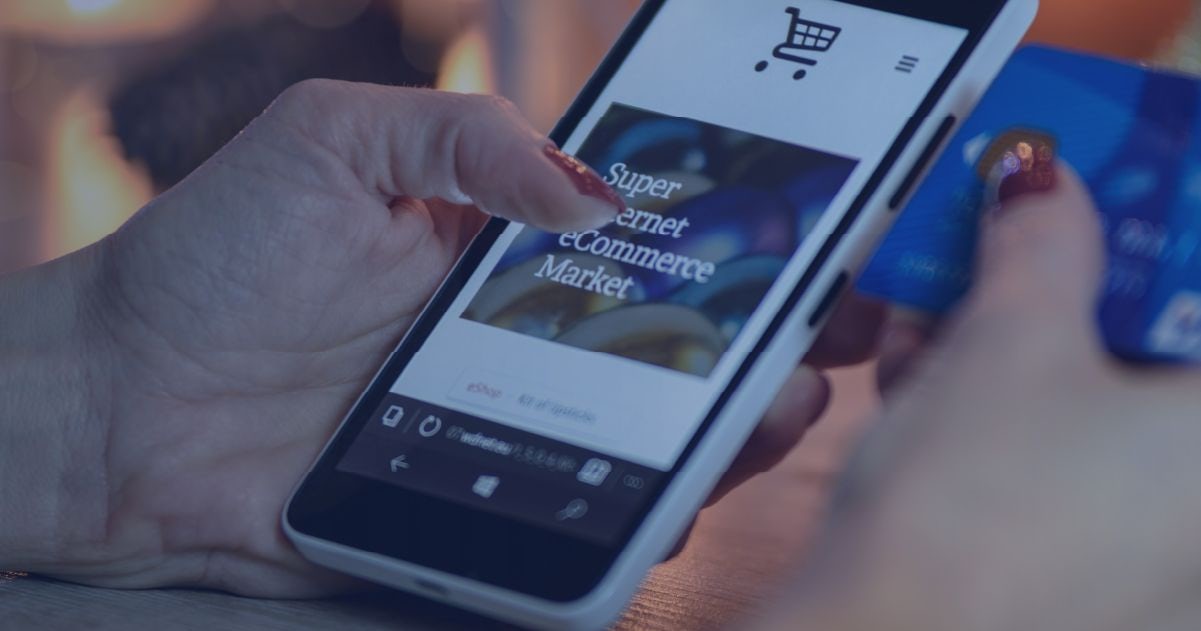The online retail space is growing faster than ever, and the COVID-19 pandemic has only accelerated its growth. Judging by consumer behaviors today, it shouldn't come as a surprise that in the future, the majority of purchases will be made using mobile devices.
Recent statistics show that in 2021, mobile commerce sales represented 72.9% of e-commerce sales worldwide.
That's why so many retailers have already moved to mobile platforms, driven by the vision of increasing their revenue, reaching new target audiences, and expanding their business operations. Almost everyone has a smartphone these days and uses wireless handheld devices for communication but also entertainment, education, and shopping.
So many things can be done with just one click of a button!
Applications like Google Pay and Apple Pay have revolutionized the way we make payments and originated the use of mobile phones as digital wallets, locking in all the important functionalities people need when on the go.
But what exactly is m-commerce? And what kind of advantages does it offer to companies? Keep on reading this article to see what m-commerce is, what its most important types are, and what are its critical benefits that will make a massive impact on retail in the near future.
Table of contents:
- What is m-commerce?
- Types of mobile commerce
- How m-commerce works + advantages & disadvantages
- The future of m-commerce
What is m-commerce?
M-commerce is short for mobile commerce, a type of online commerce that carries out digital transactions right inside mobile devices such as smartphones or tablets. There is no need for people to come into physical contact for sending or receiving money. In other words, mobile commerce is about buying and selling goods and services using mobile devices.
M-commerce is a form of e-commerce, but instead of enabling services through online shopping platforms on desktop computers, it all happens on mobile devices.
Interestingly, the term "mobile commerce" was originally coined in 1997 during the launch of the Global Mobile Commerce Forum. Back then, it meant the delivery of e-commerce capabilities directly into the consumer's hand through wireless technology. It's hard to believe that the idea was born such a long time ago, and we only see it flourish right now.
Here are a few examples of m-commerce that will instantly show you the extent to which it fills our everyday lives:
- mobile banking,
- virtual marketplace applications (like the Amazon or Alibaba mobile apps),
- digital wallets such as Apple Pay, Android Pay, Google Pay,
- mobile ticketing.
Types of mobile commerce
As you can see, m-commerce is a rather broad category that encompasses anything from mobile shopping and mobile payments to mobile banking services.
Let's take a closer look at the types of m-commerce available to businesses today:
1. Mobile shopping
Mobile shopping brings the ease of shopping to the customer right on their mobile device. The interesting part is that m-commerce can take on many different forms here. Customers can buy products on mobile devices inside the web browser, over a web application, or using a native mobile application.
2. Mobile banking
As traditional financial services companies experience more competition from fintech startups and the finance industry is disrupted by innovative technologies, the need for mobile banking is on the rise. Developing a customer-centric experience has become the primary goal of many financial services firms. That's why they turn to mobile banking - the idea here is delivering banking products and services to customers via secure mobile applications.
3. Mobile payments
This subcategory of m-commerce is closely related to the other two because it enables users to purchase products using a mobile device and removes the friction from completing the transaction. Good examples of mobile payments are digital wallets - for example, Apple Pay or Google Pay. They allow customers to buy products without having to swipe a card, pay with cash, or even type in the details of their credit card into the application.
An interesting development in this category is mobile person-to-person personal payments realized by applications like Venmo. They allow sending money from one person to another quickly - all that you need is someone's phone number or bank account, and the transaction can proceed directly.
Mobile payments now include the following innovations:
- mobile wallets (also referred to as digital wallets)
- contactless mobile payments
- closed-loop mobile payments
- money transfers
- carrier payments
- mobile point-of-sale (POS)
How m-commerce works?
M-commerce enables mobile devices to become connected to a wireless network that is in turn used to realize online product purchases. Depending on the application's purpose, you'll be looking at different software architectures, and UX design – these two elements have a massive impact on how a given application works.
Still, teams in charge of building m-commerce applications should take into account important KPIs that feed into mobile analytics solutions like the total mobile traffic, average order value, and value of orders over time. It's important to track the mobile app's add-to-cart activities to examine how quickly visitors are becoming customers and how many of them become paying customers, not just people who browse for items.
M-commerce products usually operate through some form of peer-to-peer sharing. For example, a bank can pair a mobile device with the customer's card information so that users can simply touch their phone to a payment terminal in order to pay for the product. This use of mobile devices is made possible through the use of Near Field Communication (NFC).
Advantages of m-commerce
1. Improved customer retention
By making content available to customers on the go, brands can enjoy better customer retention rates and become more accessible to people. Providing users with a means to easily purchase products on their mobile phones is a smart move because it expands the range of contexts where such purchases can take place.
2. Larger target market
By investing in m-commerce, you can reach more customers - especially among younger audiences who spend a lot of their time on their phones. M-commerce allows customers to discover products easily. Smart businesses use mobile commerce applications in line with popular social media applications like Facebook or Instagram to engage new customer segments and carry out successful remarketing.
3. Better user experience
Mobile commerce applications offer fast and convenient access to products. These applications are often interactive and provide users with exclusive deals or promotions while these customers are shopping inside the brand's brick-and-mortar stores. As a result, they deliver a superior user experience to other types of m-commerce.
4. New mobile marketing channels
A mobile application is also a brand-new marketing channel where companies can:
- share information about their products,
- allow users to search for features,
- create a newsfeed,
- deliver special sales and promotions via push notifications to become closer to their target audience.
5. Personalized notifications and location tracking
Since mobile devices are carried by users everywhere they go, location tracking can be credibly helpful if you'd like to assist them while they're navigating the store. You can also understand where users are to send them a location-based push notification featuring personalized discounts – all to increase your sales volume. This is the first step to developing a truly omnichannel buying experience that drives more conversions home.
That said, m-commerce comes with several key challenges that you should be aware of before embarking on the m-commerce journey.
Disadvantages of mobile commerce
1. High cost
The technology required for setting up an m-commerce application is quite expensive at the moment. Such a capital investment is still impossible for many businesses that would like to expand their operations to mobile commerce.
2. Access to the internet is critical
If you're operating in a country where the network signal isn't great, and providers are incapable of offering good connection speed, your application might not perform as well and reach as many people as you would like to. You need a connection strong enough for data transfer, especially if you plan to include video content or images in your application.
3. Security demands
Another important matter is security. It's essential that applications are kept safe. This goes especially for mobile banking applications where one data leak or any other security risk might mean a loss of reputation for the entire company.
4. Excellent design is a must-have
A poorly designed app with a bad user experience might reduce the number of purchases and lead to customer dissatisfaction. Problems like lags or content taking too long to load are all relevant here because they contribute to the user experience.
5. Accessibility matters
Mobile payments are present in most countries, but they are still not available across all the locations in the world. Take this into account and consider whether or not your target audience is likely to use their smartphones that way – whether it's to make purchases or use mobile systems for payments. Do this before investing in a costly mobile application.
The future of m-commerce
M-commerce is a rapidly expanding field as plenty of companies are now investing in building their own mobile applications. This would be happening anyway, but the COVID-19 pandemic accelerated this process by causing some pretty dramatic changes in consumer behaviors.
One of the most significant future trends of m-commerce is its sheer market share and growth. E-commerce sales are expected to rise to over $735 billion by 2022 – and a huge chunk of that number will be sales coming from mobile devices like smartphones and tablets.
We hope that this article helps you understand what m-commerce is, how it works, and how you could harness its potential for your business.
At Codete, we have realized a number of mobile commerce projects for clients across different industries and know what it takes to build a successful application.
If you're looking for some more advice or want to hire an experienced team with an excellent track record, get in touch with us. We can help you build a mobile commerce experience that realizes all the potential benefits of this fantastic technology.

